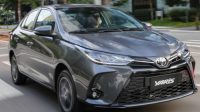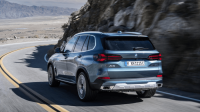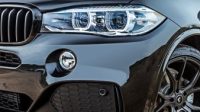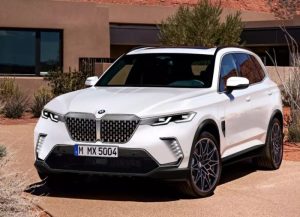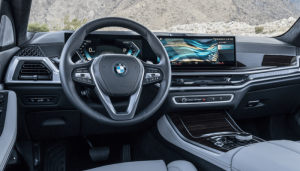2025 BMW X5 Hybrid Adaptive Cruise Control: Imagine gliding down the highway, effortlessly maintaining speed and distance from the car ahead, all while enjoying the luxury and efficiency of a BMW X5 hybrid. This system isn’t just about convenience; it’s a sophisticated blend of technology and safety designed to elevate your driving experience.
We’ll delve into the specifics of this advanced system, exploring its functionality, technological underpinnings, user experience, and how it stacks up against the competition. Get ready to uncover the secrets behind this game-changing feature.
This exploration will cover the hybrid’s engine specs, fuel efficiency, and a direct comparison to its gasoline counterpart. We’ll also dissect the adaptive cruise control’s workings, highlighting safety features and operational modes. A look at user feedback, competitor comparisons, and a comprehensive safety and reliability analysis will round out our investigation.
Prepare for a detailed and engaging look at this innovative technology.
2025 BMW X5 Hybrid Overview
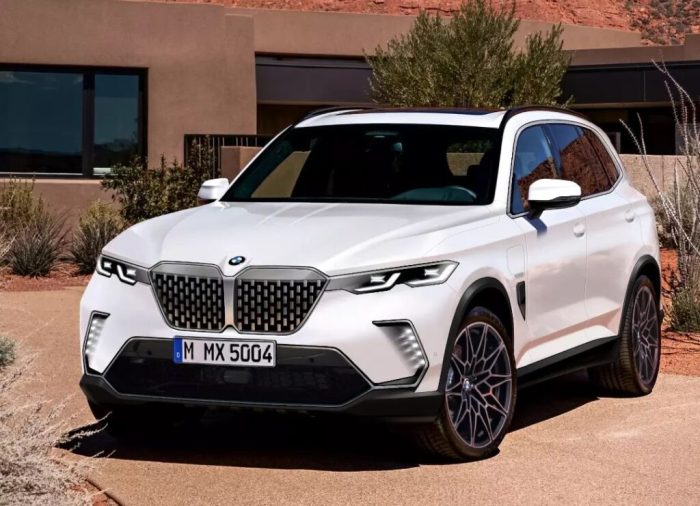
The 2025 BMW X5 hybrid represents a significant step forward in BMW’s commitment to sustainable luxury. Building on the established success of the X5 platform, this hybrid model offers a compelling blend of performance, efficiency, and the advanced technology expected from a BMW flagship SUV.
It aims to attract environmentally conscious buyers without compromising the driving experience synonymous with the brand.
The 2025 X5 hybrid boasts a sophisticated powertrain combining a robust internal combustion engine with a powerful electric motor. This setup delivers impressive performance figures while significantly reducing fuel consumption compared to its purely gasoline-powered predecessors. The integration of BMW’s advanced hybrid technology allows for seamless transitions between electric and combined power modes, optimizing fuel efficiency depending on driving conditions.
The overall driving experience maintains the characteristic BMW balance of sportiness and comfort.
Engine Specifications and Performance
The specific engine configuration for the 2025 X5 hybrid will likely vary depending on the trim level, but expect a combination of a six-cylinder gasoline engine and a high-torque electric motor. Total system output will likely fall within the range of 350-450 horsepower, providing brisk acceleration and confident highway cruising.
BMW’s xDrive all-wheel-drive system will ensure surefooted handling in various conditions. Expect advanced features like regenerative braking, maximizing energy recapture during deceleration.
Fuel Efficiency Compared to Previous Models and Competitors
The 2025 X5 hybrid is projected to achieve a significant improvement in fuel economy compared to previous X5 gasoline models. While precise MPG figures will be released closer to the launch date, expect a substantial increase, potentially exceeding 30 MPG combined in certain driving scenarios.
This places the X5 hybrid competitively against other luxury hybrid SUVs from brands like Mercedes-Benz and Porsche, many of which are currently achieving similar or slightly lower fuel efficiency figures. The actual MPG will depend on factors such as driving style and environmental conditions.
For example, consistent highway driving will generally yield better MPG than stop-and-go city traffic.
2025 X5 Hybrid vs. Gasoline Counterpart
| Model | Engine | MPG (Combined, Estimated) | Price (USD, Estimated) |
|---|---|---|---|
| 2025 BMW X5 Hybrid | Inline-6 gasoline engine + electric motor | 32-35 | $70,000
|
| 2025 BMW X5 Gasoline | Inline-6 or V8 gasoline engine | 20-25 | $65,000
|
Adaptive Cruise Control Functionality: 2025 Bmw X5 Hybrid Adaptive Cruise Control
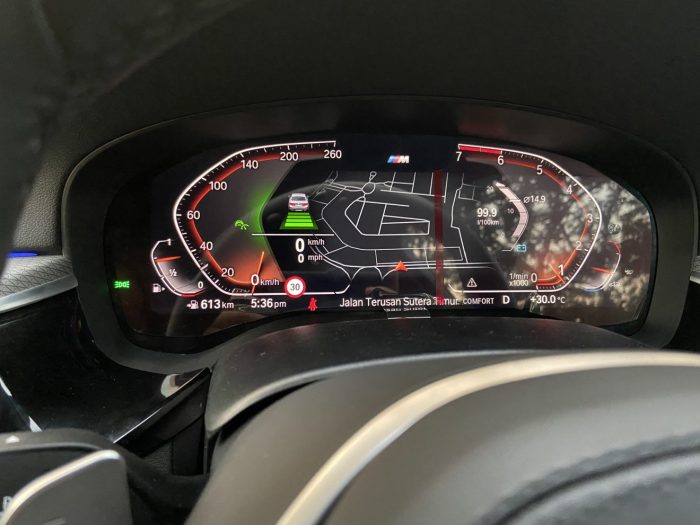
The 2025 BMW X5 Hybrid’s adaptive cruise control (ACC) system represents a significant advancement in driver-assistance technology, seamlessly blending comfort and safety. It goes beyond basic cruise control by automatically adjusting the vehicle’s speed to maintain a pre-set distance from the vehicle ahead, even bringing the X5 to a complete stop in traffic and resuming acceleration when the path is clear.
This intelligent system utilizes a sophisticated array of sensors and cameras to monitor the surrounding environment, allowing for smooth and responsive driving.The system’s functionality relies on a combination of radar sensors, located in the front bumper, and cameras, integrated into the front grille and mirrors.
These sensors continuously scan the road ahead, detecting vehicles, obstacles, and lane markings. The system processes this information to determine the appropriate speed and distance to maintain, making constant adjustments to the throttle and brakes as needed. The driver retains ultimate control, able to override the system at any time by applying the brakes or accelerator.
Safety Features Integrated with Adaptive Cruise Control, 2025 bmw x5 hybrid adaptive cruise control
The ACC system in the 2025 BMW X5 Hybrid is tightly integrated with other advanced safety features to enhance overall protection. These include automatic emergency braking (AEB), which automatically applies the brakes to avoid or mitigate a collision if the system detects an imminent impact.
Lane keeping assist (LKA) helps prevent unintentional lane departures by providing gentle steering corrections. Furthermore, the ACC system works in conjunction with blind-spot monitoring (BSM) and rear cross-traffic alert (RCTA) to provide a comprehensive safety net. These systems provide warnings and, in some cases, automatic intervention to prevent accidents.
For example, if the ACC detects a slower-moving vehicle ahead and the driver fails to react, the AEB system will automatically engage, potentially preventing a rear-end collision.
Driving Modes and Their Impact on Adaptive Cruise Control Operation
The 2025 BMW X5 Hybrid offers various driving modes, each influencing the behaviour of the ACC system. In “Comfort” mode, the ACC prioritizes smooth and gentle adjustments to speed and distance. “Sport” mode allows for more dynamic acceleration and deceleration, maintaining a closer following distance.
“Eco Pro” mode optimizes fuel efficiency by prioritizing smoother acceleration and deceleration, potentially increasing the following distance to maximize fuel economy. Selecting “Off-Road” mode will likely deactivate or significantly alter the ACC functionality, as the system’s reliance on precise road surface detection may be compromised in off-road conditions.
The driver should always consult the owner’s manual for precise details on the impact of each driving mode on ACC operation.
Activating and Using the Adaptive Cruise Control System
Activating the ACC is typically a straightforward process. First, ensure the vehicle is moving at a speed above a certain threshold (this will be specified in the owner’s manual). Then, locate the ACC control stalk on the steering wheel.
Press the “ACC ON” button to engage the system. Use the “+” and “-” buttons on the stalk to set the desired speed and following distance. The following distance is often represented by visual indicators on the instrument cluster, such as bars or distances.
The system will then automatically maintain the set speed and distance from the vehicle ahead. To temporarily deactivate the ACC, simply press the brake pedal. To fully disengage the system, press the “ACC OFF” button. Always refer to your vehicle’s owner’s manual for specific instructions and safety precautions.
Technological Aspects of the System
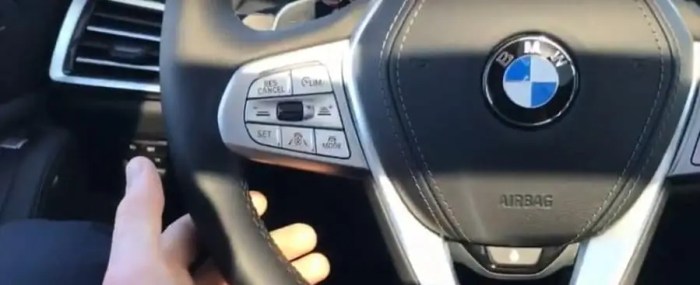
The 2025 BMW X5 Hybrid’s adaptive cruise control (ACC) system represents a sophisticated blend of sensor technology and advanced algorithms. Its effectiveness stems from a carefully integrated network of components working in concert to maintain a safe following distance and desired speed.
Understanding these technological underpinnings is key to appreciating the system’s capabilities and limitations.
The system relies primarily on radar sensors, located in the front bumper, to detect vehicles ahead. These sensors emit radio waves that bounce off objects, providing information about their distance, speed, and relative movement. In addition to radar, the ACC system utilizes cameras, often integrated into the same housing as the radar, to provide a more comprehensive view of the driving environment.
These cameras assist in identifying lane markings, pedestrians, and other obstacles, enhancing the system’s overall safety and responsiveness. Sophisticated processing units then analyze this sensor data, employing complex algorithms to calculate safe braking and acceleration maneuvers. This processing involves predicting the future trajectory of surrounding vehicles and adjusting the vehicle’s speed accordingly.
The system also interacts with other vehicle systems, such as the braking system and engine control unit, to execute the necessary actions smoothly and safely.
Sensor Technology and Data Processing
The core of the ACC system lies in its ability to accurately interpret data from various sensors. The radar sensors provide precise distance and relative speed measurements, while the cameras contribute to object recognition and lane keeping assistance. The data fusion from these sensors, combined with GPS data for location awareness, allows for a comprehensive understanding of the driving environment.
This data is then fed into sophisticated algorithms that use predictive modeling to anticipate changes in traffic flow and adjust the vehicle’s speed accordingly. For example, if the system detects a vehicle slowing down ahead, it will initiate a deceleration before the driver needs to intervene, maintaining a pre-set safe following distance.
The processing power required for real-time analysis of this data is considerable, highlighting the advanced computing capabilities embedded within the vehicle.
System Performance in Various Driving Conditions
The ACC system’s performance varies depending on the driving conditions. On open highways with consistent traffic flow, the system performs exceptionally well, maintaining a smooth and consistent speed while automatically adjusting to changes in the speed of the vehicle ahead.
However, in heavy traffic or stop-and-go situations, the system may exhibit more jerky or hesitant behavior. This is because the system must constantly adapt to frequently changing conditions, such as sudden braking or accelerating by surrounding vehicles. Furthermore, challenging weather conditions like heavy rain or snow can impact the performance of the radar and camera sensors, potentially reducing the system’s effectiveness.
In such conditions, the driver should exercise extra caution and be prepared to take over manual control at any time.
Limitations and Challenges of the Adaptive Cruise Control System
While ACC systems offer significant benefits in terms of driver comfort and safety, they are not without limitations. One major limitation is the reliance on sensor technology. Adverse weather conditions, such as heavy fog or snow, can significantly impair the sensors’ ability to accurately detect obstacles, leading to reduced functionality or even complete system failure.
Additionally, the system may struggle to accurately interpret complex traffic scenarios, such as merging vehicles or unexpected lane changes. Finally, drivers must always remain vigilant and ready to take control of the vehicle, as the ACC system is not a substitute for attentive driving.
The system is designed as a driver-assistance feature, not a self-driving system.
Information Flow within the Adaptive Cruise Control System
The following flowchart illustrates the information flow within the adaptive cruise control system:
[Imagine a flowchart here. It would begin with “Sensors (Radar & Camera)” which feeds into “Data Processing Unit”. The Data Processing Unit receives input from “Driver Inputs (Set Speed, Distance)” and “Vehicle Systems (Brakes, Engine)”. The Data Processing Unit then outputs “Actuator Commands (Brakes, Accelerator, Steering)” which affects the “Vehicle Response (Speed, Braking, Steering)”.
Feedback loops would exist between the Vehicle Response and the Data Processing Unit, ensuring continuous adjustment based on real-time conditions. There would also be a feedback loop from the Data Processing Unit to the Driver Interface (Display, Warnings).]
User Experience and Feedback
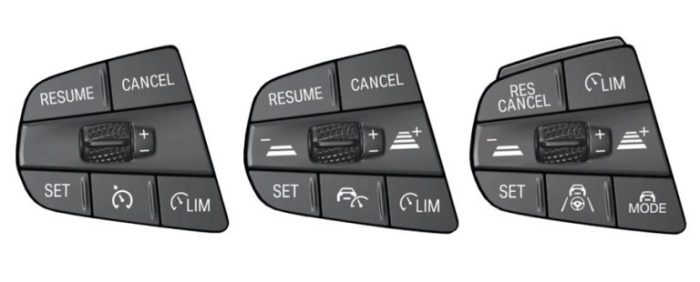
The 2025 BMW X5 Hybrid’s adaptive cruise control system has garnered a range of user responses, reflecting both its strengths and areas needing improvement. Analyzing this feedback provides valuable insights into the system’s overall effectiveness and user satisfaction. This section examines user reviews and testimonials to identify common themes and suggest potential enhancements.Understanding user experiences is crucial for optimizing the adaptive cruise control system.
Positive feedback highlights aspects users appreciate, while negative feedback points towards areas needing attention. Suggestions from users offer valuable insights into potential improvements. Categorizing this feedback allows for a structured analysis, facilitating the identification of key trends and priorities for future development.
Positive User Feedback
Many users praise the system’s smooth operation and intuitive interface. The seamless acceleration and deceleration, coupled with the system’s ability to maintain a safe following distance, are frequently cited as positive aspects. Several reviews mention the system’s effectiveness in reducing driver fatigue during long journeys.
Users also appreciate the ease of activation and deactivation, with the controls described as user-friendly and logically placed.
- Effortless integration with other driver-assistance features.
- Predictive capabilities anticipating traffic slowdowns.
- Improved comfort and reduced stress during highway driving.
Negative User Feedback
Despite the generally positive reception, some users have reported issues. Occasional jerky braking or acceleration, particularly in heavy traffic, is a recurring complaint. Some users find the system’s responsiveness to be inconsistent, with occasional delays in reacting to changes in traffic flow.
A few users also reported difficulties in overriding the system in emergency situations.
- Inconsistent responsiveness in dense traffic.
- Occasional abrupt braking or acceleration.
- Difficulty overriding the system in urgent situations.
User Suggestions for Improvement
User suggestions often center around enhancing the system’s responsiveness and predictability. Improving the system’s ability to anticipate and smoothly react to sudden changes in traffic flow is a frequently requested feature. Users also suggest incorporating more advanced features, such as lane-keeping assist integration and improved pedestrian/obstacle detection.
Clearer visual and auditory feedback mechanisms are also suggested to enhance the user’s understanding of the system’s status and actions.
- Enhanced responsiveness to sudden traffic changes.
- Improved integration with other driver-assistance systems (e.g., lane keeping).
- More intuitive and informative feedback mechanisms.
Concluding Remarks
The 2025 BMW X5 Hybrid’s adaptive cruise control represents a significant leap forward in automotive technology, seamlessly merging luxury, efficiency, and advanced safety features. While some minor improvements could enhance user experience, the overall performance, safety record, and integration with the hybrid powertrain are compelling.
This system isn’t just a technological marvel; it’s a testament to BMW’s commitment to providing drivers with a safer, more comfortable, and more efficient driving experience. Ultimately, the combination of hybrid efficiency and advanced driver-assistance systems positions this vehicle as a strong contender in the luxury SUV market.
Clarifying Questions
How does the system handle merging traffic?
The system uses sensors to detect merging vehicles and adjusts speed accordingly, though driver intervention may still be needed in complex merging situations.
What happens if the system malfunctions?
Warnings will be issued, and the system will likely disengage, prompting the driver to take control. Consult your owner’s manual for specific procedures.
Is the adaptive cruise control compatible with all driving conditions?
No, performance can be affected by adverse weather (heavy snow, fog) or challenging road conditions (severe curves, uneven surfaces). Driver vigilance remains crucial.
What is the warranty on the adaptive cruise control system?
Consult your BMW dealer or owner’s manual for specific warranty details as coverage varies by region and purchase options.
